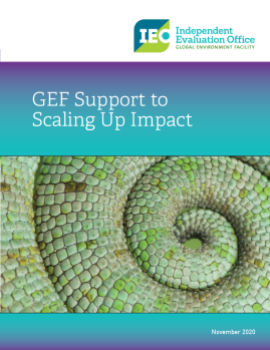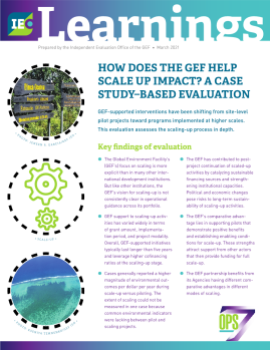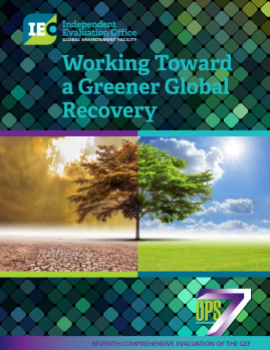Scaling up is not new to the GEF and in the last decade, all GEF focal areas have been shifting from site-level pilot projects towards projects or programs implemented at higher scales. Based on a review of focal area strategies and interviews with the GEF partnership, the GEF has gradually shifted its focus from pilots to scaled-up interventions over the last 25 years. In part, this is because the GEF partnership has built up a much better understanding of what interventions work based on the portfolio of demonstration projects implemented during GEF's early phases. As a more targeted response to the need to achieve impact at scale, the GEF introduced the Integrated Approach Pilots in GEF-6 and the Impact Programs in GEF-7, which have just begun implementation. However, the conditions under which scaling up has been successful or unsuccessful, and the processes by which impacts are scaled up, have not been systematically assessed. In addition, based on interview responses, there appears to be a varied understanding of scaling up across the partnership and how it is achieved in operational terms.
This evaluation draws on the previous experiences of the GEF in scaling up to better understand and draw lessons on the processes through which scaling up occurs and the conditions under which it is effectively achieved. The IEO has been tracking scaling up as one indicator of progress towards impact, reporting its prevalence in the GEF portfolio in the overall performance studies. Moreover, recent evaluations contributing to OPS6, such as those on transformational change and GEF's support for legal and regulatory frameworks, note the importance of the scaling up process in achieving larger-scale impact. This is the first evaluation to systematically assess the scaling up process in depth, and the influencing factors and conditions. Using a purposive sampling approach, the evaluation conducted quantitative and qualitative analyses on both successful and less successful cases of GEF support to scaling up. Information was extracted from document reviews, interviews, and field visits to three countries. The evaluation provides lessons for the GEF in future support for scaling up throughout its portfolio, and for the GEF-7 Impact Programs in particular.


